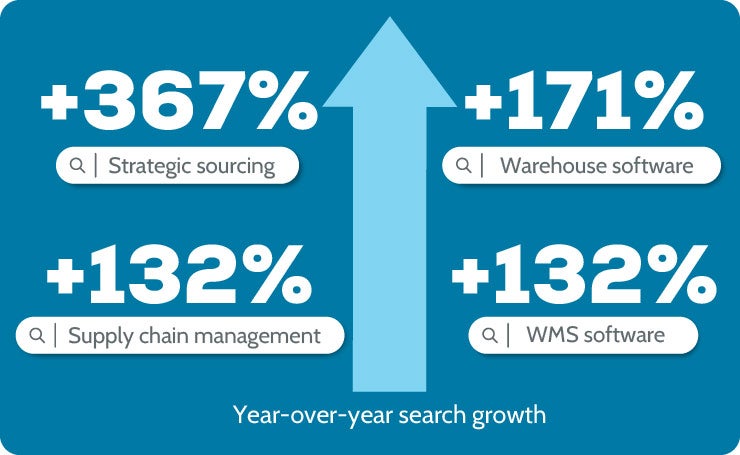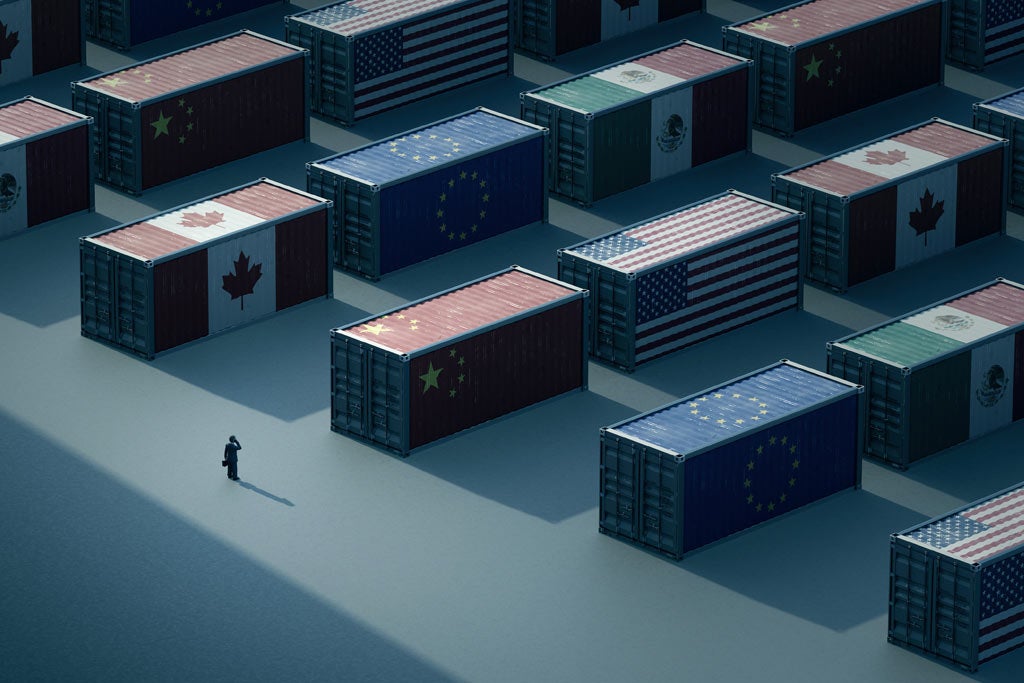Staying agile in the face of tariffs
Over the past year, searches for “strategic sourcing” have increased by 367%.
All signs point to the fact that retailers, suppliers and 3PLs need to adjust their existing processes toward stronger tariff mitigation strategies and better supply chain resilience practices.
The 2025 tariff landscape isn’t just another supply chain disruption—it’s fundamentally reshaping trade economics. SPS Commerce customers have voiced many concerns, from being unable to absorb 25% price hikes to suddenly shouldering an extra $500,000 a week in additional costs.
This tension has prompted caution from major retailers such as Target, Best Buy, Costco and Dick’s Sporting Goods over the potential impact of tariffs on profitability and consumer sentiment. These forward-thinking companies (and others like them) are using this challenge to build supply chain resilience that will create lasting competitive advantages.
While tariffs are unfortunately out of everyone’s control, one thing is clear: agility, accessibility and preparedness are essential for continued growth amidst the complex navigation of higher costs.
Impacts on the supply chain
No matter your company’s role in the supply chain, the shockwaves of newly implemented tariffs are felt.

For retailers, especially those in the electronics, apparel and footwear spaces, the impact is felt most by supplier-imposed tariff costs. Major retailers are expecting to “react in real-time” as the effect of tariffs changes throughout the coming months.
Smaller or niche retailers with limited procurement power and narrower profit margins could be hit especially hard if tariffs persist or expand. These businesses often can’t diversify their supply chains quickly enough or absorb cost shocks, so ongoing trade volatility places them at a structural disadvantage compared to large-scale competitors with global supplier networks.
Suppliers bear the initial burden of immediate financial costs as sales decline due to higher tariffs. They need to focus on strengthening demand forecasting with access to the data and insights that keep them in sync with customers’ needs as they evolve.
When it comes to transportation and storage, 3PLs must manage more complex documents for tariff declarations, along with increased administrative complexity around unpredictable shipping schedules, partial shipments and unstable inventory patterns. Collaboration and communication are crucial to ensuring that nothing slips through the cracks.
Responses from players in the supply chain
Faced with high tariffs, companies across the supply chain have had to adapt, balancing new challenges with the need to maintain existing processes and keep business moving.
- Price strategy adjustments: Many companies have raised prices—whether for their end customers or a retailer—to continue making a profit.
- Quality adjustments: An easy way for a business to save money when faced with higher tariffs is to cut back on item quality via cheaper materials or manufacturing processes.
- Alternative suppliers: Higher tariffs on a previously imported product? Some businesses have switched to distributors that are more local to avoid paying more, even at the cost of item quality.
- Narrower profit margin: More a result than a strategy, companies navigating high tariffs may see their profit margin become narrower than they are used to.
- Tariff engineering: Could classifying your product in a new category help avoid higher costs on certain items? Many companies have attempted to take this route. For example, if the shoe you are selling is more than 50% covered in felt, you can classify it as a slipper, lowering the cost by 7.5%.

Year-over-year search history indicates a collective need for better solutions.
Source: SEM Rush via SPS Commerce
Where SPS Commerce comes in
At SPS Commerce, our goal is to equip our customers with the tools to foster better supply chain partnerships. Here’s what our solutions focus on improving for each supply chain vertical:
Retail
- Offering accessible, efficient systems that help you shift sourcing quickly
- Aggregating insights into granular data that help predict prices and sales, even in uncertain times
- Promoting stronger supplier collaboration to keep effective pathways of communication open
Supplier
- Simplifying diversification and nearshoring processes
- Improving communication with upstream and downstream trading partners for better collaboration and more transparency
- Clarifying regulatory needs as requirements rapidly change
3PL
- Preparing for surges in demand due to the changing tariff landscape
- Creating an efficient new customer onboarding processes to keep shipments running smoothly
- Providing stronger sales data insights for trading partners
Where do I go next?
Agility is the name of the game.
As many businesses across the supply chain face significant financial pressures from tariff impacts, strategic adaptation becomes essential.
For global businesses that are struggling to stay ahead of disruptions and uncertainty due to tariff legislation, the most important thing to prioritize is supply chain agility. Remaining flexible during unpredictable times means having a solution that can scale with your business, uses the latest and greatest technology and is there to make your day-to-day run more smoothly.
Having a team of well-connected experts in your corner (like SPS!) gives you the option to move with the pace of demand, rather than try to scramble and make up for it after the fact. With the right team behind you, tariffs can feel less overwhelming—and ultimately be less disruptive.
At SPS Commerce, our automated data sharing ensures that everyone is on the same page, even when things change minute by minute. And we provide actionable data and insights that improve performance for both you and your trading partners, so you’re better prepared to move through whatever comes next with more confidence.
Learn more
To stay up to date with supply chain insights, tips and tricks, sign up for our Chain Reaction newsletter.
Plus—listen to “The on-the-ground reality of tariffs” with Tracey Ortiz, Director, Product Management at SPS Commerce.
- Staying agile in the face of tariffs - April 9, 2025

RELATED POSTS
Solving the 5 critical challenges pre...
3 roadblocks to transportation scorec...
Scaling smarter: Why trucking compani...